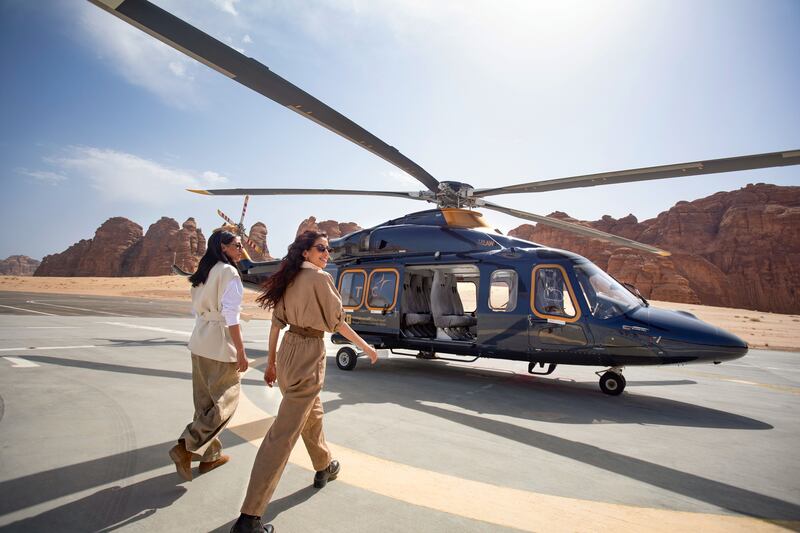Travellers visiting Saudi Arabia can experience Al Ula from a new vantage point, with a helicopter tour over the ancient region.
Twice-daily flights are ferrying visitors over the archaeologically rich region in Saudi’s north-west, taking in seven major sites during a 30-minute leisure flight.
Previously only accessible to archaeologists, geologists and those with private bookings, helicopter rides over one of Arabia’s oldest cities are now open to the public and cost $199.
The tours aim to give visitors a new way to appreciate the diversity and monumentality of an area that was once the crossroads of both the Silk Road and Incense Route.
Don Boyer, a geologist who was one of the first to undertake research-based flights in Al Ula, says that visitors can expect to be "blown away", just as he was the first time he took to the air in Saudi Arabia.
“The fact that you have these three completely different landscapes – the Precambrian Arabian shield rocks, the sandstone that was laid down over it and then the black basalt formed by volcanic eruptions – all in the one area is what makes Al Ula so special,” said Boyer.
From Elephant Rock to ancient Dadan
The flights take in seven of Al Ula’s most famous landmarks, starting with the monumental Jabal AlFil, or Elephant Rock. Towering about 52 metres in the air, the natural formation has eroded over millions of years and is now in the shape of an elephant with a ground-bound trunk.
From here, choppers fly towards Hegra, Saudi Arabia’s first Unesco World Heritage Site and the ancient southern capital of the Nabataean Civilisation. The vehicles also fly over the sand-dusted remains of the Hijaz Railway, and one of the last trains that were designed to speed pilgrims from Damascus to the holy cities of Makkah and Madinah.
Turning west, there's a birds-eye view of Maraya. The reflective concert hall holds the Guinness World Record for being the largest mirrored building on Earth and visitors will be able to take some unique pictures of the helicopter reflected in its glistening frame.
Finally, tours turn south over Jabal Ikmah, Al Ula’s open-air library and back down to cross Dadan, a stone city that was formerly the capital of two ancient civilisations. A flyover above Al Ula’s Old Town gives passengers an unusual view of the 12th-century medieval city before it's time to land.
“The landscape we see today is more or less the same landscape those guys saw 7,000 years ago. The pleasure of flying over this part of Arabia as opposed to, for example, heritage sites in Europe is that there is no clutter,” said Boyer.
“In Al Ula, it’s vast, you see things in their raw state and the state of preservation is generally very good indeed.”
Is Saudi Arabia open for tourism?

Saudi Arabia has reopened to vaccinated international visitors travelling on a tourism visa from several destinations. Travel to the kingdom remains restricted for those from specific countries, including the UAE, Egypt, Lebanon, Pakistan and India.
All visitors arriving in Saudi Arabia with a valid tourist visa must be fully inoculated with two doses of AstraZeneca, Pfizer or Moderna vaccines, or one dose of Johnson & Johnson. Tourists who have been vaccinated with Sinovac or Sinopharm can fly to the kingdom once they have received an additional dose of one of the four approved vaccines.
There’s no quarantine in place for vaccinated tourists, but all travellers must provide a negative PCR test taken no more than 72 hours before departure and complete an online travel form before departure.






